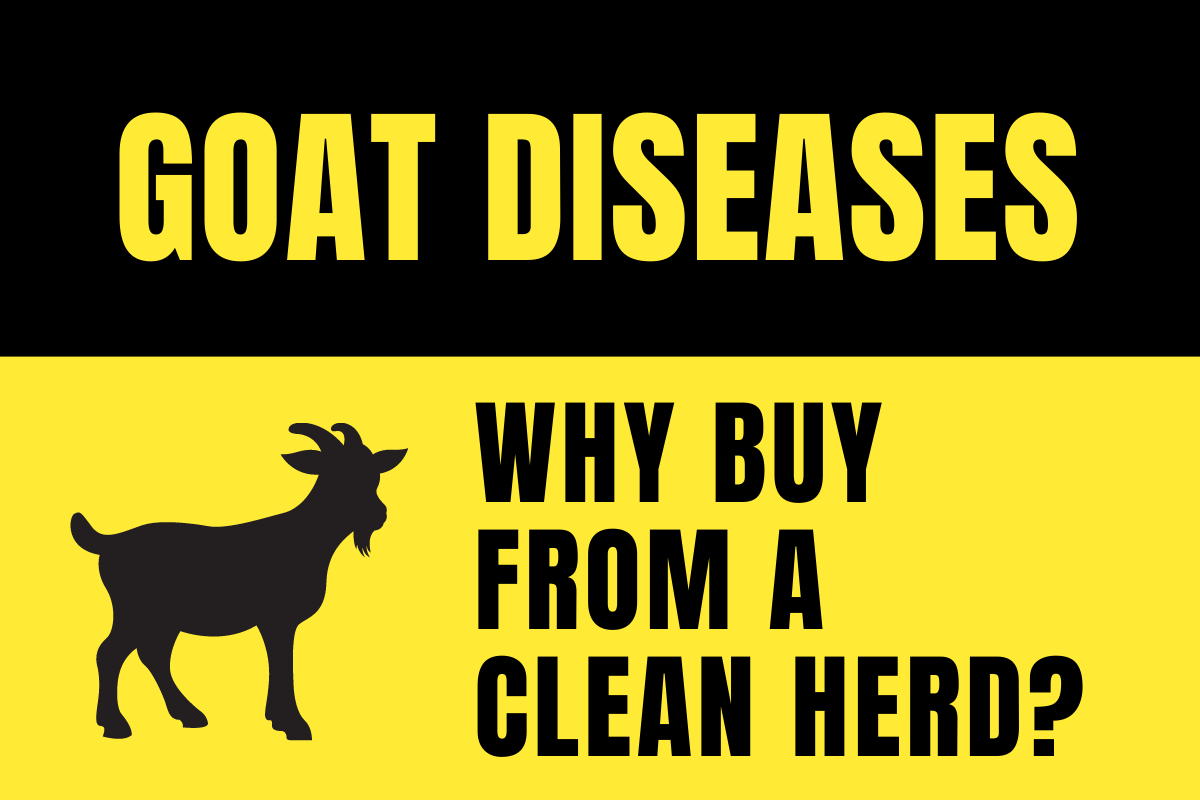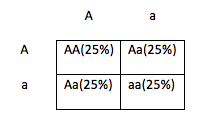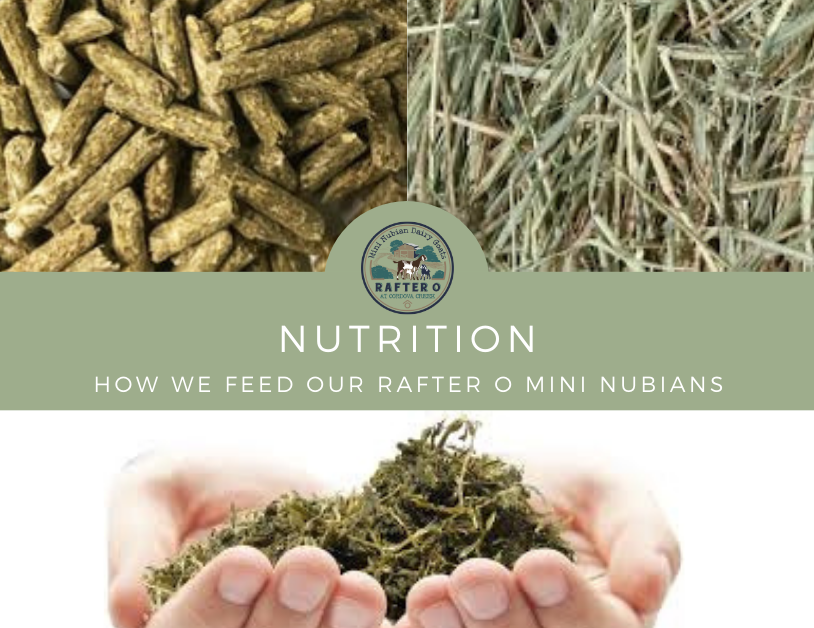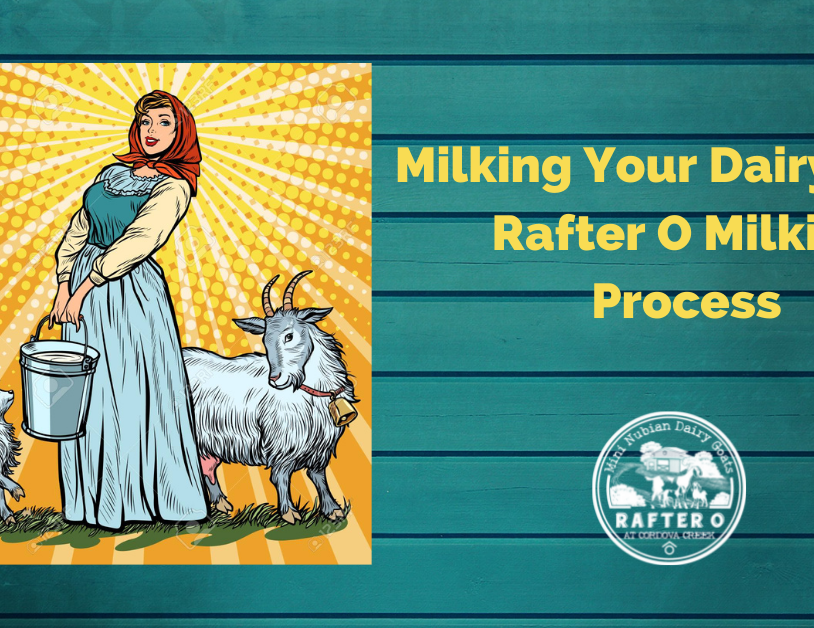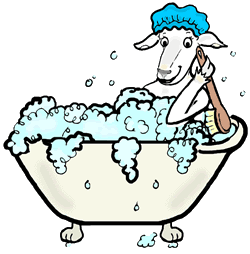
What is a clean herd? You might have come across this term before. Lots of goat folks will use this term to describe their herds, but, keep in mind, each person might have a different definition of what entails a “clean herd”.
At the Rafter O, we consider our herd to be “clean” because we test annually for Caprine Arthritis Encephalitis (CAE), Caseous Lymphadenitis (CL), Johne’s, and Q Fever. We will test every three years for Brucellosis. Our herd is negative for all of these diseases.
Also, since we raise Mini Nubians, we consider our herd “clean” of G6S because all of our goats have been tested or are normal by parentage.
While our herd is not “closed” because we do attend our local MDGA shows and we do bring in new goats from other herds, we take all precautions to keep our goats disease-free and healthy. We have purchased a few adult goats recently, and we make sure they have tested negative for these diseases before they arrive at our farm.
You do not want to risk these diseases getting onto your farm! For some, the animals will suffer, for others, the zoonotic risk to you and your family is grave. Don’t risk it! Only buy from clean herds that test ALL goats annually.

Disease Testing at Universal Biomedical Research Laboratory (UBRL)
We have used UBRL and WADDL for our disease and pregnancy testing. The BioSecurity Panel at UBRL includes CAE, CL, and Johne’s, and we add Q fever. The current cost per goat on this is $28.50. Pregnancy tests can be added on for $6.00. While it is a significant cost for our farm to test EVERY goat every other year, we feel that having a clean, healthy herd is worth it! We save on shipping each year by combining samples with another local goat farm. UBRL is a certified lab with excellent customer service. I highly recommend them. Without further adieu, the diseases…..
Caprine Arthritis Encephalitis
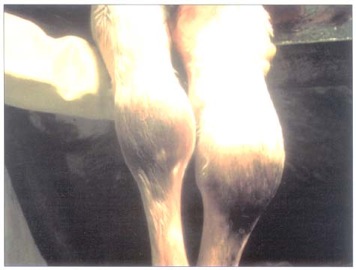
CAE (Caprine Arthritis Encephalitis Virus) is a persistent lentivirus infection of goats. Polyarthritis is the main clinical sign of CAE infection. There are four forms of CAE: a central nervous system form that affects kids, the arthritic form that affects adults, a pneumonia form, and a mastitic form. Most CAE-infected goats show no clinical disease but remain persistent virus carriers. The major mode of viral transmission is vertically through milk and colostrum. Respiratory secretions and feces also harbor the infectious virus. Good management practices, supported by a reliable diagnostic tool, are the best means of controlling the spread of disease.
UBRL Livestock Diagnostics offers a competitive enzyme-linked immunosorbent assay (cELISA) licensed to detect antibodies to caprine CAE in goat sera. This ELISA test utilizes a proprietary xeno-monoclonal antibody derived by fusion of goat splenocytes and mouse myeloma cells which has excellent characteristics for use in cELISA. This ELISA is USDA approved.
Caseous Lymphadenitis
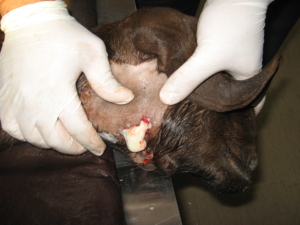
Caseous lymphadenitis (CL) in Goat and Sheep is a chronic, contagious disease caused by Corynebacterium pseudotuberculosis. The disease is characterized by abscess formation in or near major peripheral lymph nodes (external form) or within internal organs and lymph nodes (internal form). Although both the external and internal forms of CL occur in sheep and goats, the external form is more common in goats, and the internal form is more common in sheep. CL is not considered a “curable” disease. Economic losses from CL include death, condemnation, and trim of infected carcasses, hide and wool loss, loss of sales for breeding animals, and premature culling of affected animals from the herd or flock. Because of its zoonotic potential, care should be taken when handling infected animals or purulent exudate from active, draining lesions. C.pseudotuberculosis can survive in the environment for several months and is highly infectious. The herd should be monitored by routine testing as the infected animals may not show visible or obvious clinical symptoms.
UBRL Livestock Diagnostics’ CL test uses an enzyme-linked immunosorbent assay (ELISA) for the detection of IgG antibodies specific for the causative agent of caseous lymphadenitis (CL) in sheep or goat sera.
Johne’s Disease
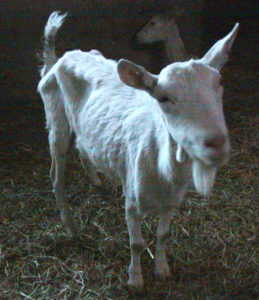
Johne’s disease is a slow, progressive, contagious, and untreatable bacterial disease that ordinarily infects Cattle, Goats, and Sheep. Infected animals maintain a normal temperature but exhibit weight loss and diarrhea. In the later stages of the infection, animals can become weak, and death may occur in some infected animals.
UBRL Livestock Diagnostics offers the Johne’s Disease ELISA (enzyme-linked immunoassay) Test, which is a highly specific and effective method for producers and veterinarians to detect and control Johne’s disease. This test method is a quantitative USDA-approved ELISA designed to detect the presence of antibodies to Mycobacterium paratuberculosis in Blood.
Q Fever
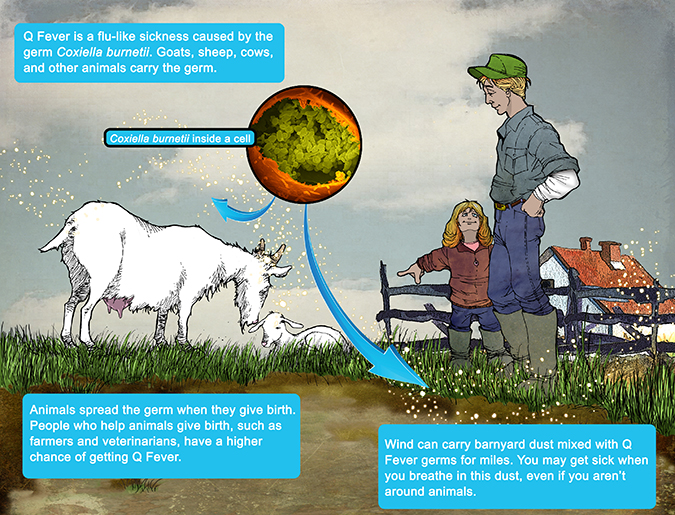
Q fever is caused by Coxiella burnetii and is considered a zoonotic bacterial infection. The infection is usually subclinical but can cause anorexia and late abortion. Q Fever is found in most places worldwide. It is spread mostly through ectoparasites (E.g., Ticks) and at parturition by inhalation, ingestion, or direct contact with birth fluids or the placenta. The organism is also shed in milk, urine, and feces.
UBRL Livestock Diagnostics Q Fever test uses an enzyme-linked immunosorbent assay (ELISA) to detect antibodies against Coxiella burnetii in the blood sample.
While most farms do not test for Q fever, we feel that it is very important to do so since we drink the goat milk raw. This is a very zoonotic disease (meaning people can get it) that you don’t want on your farm! Check out this link to the CDC Q Fever Info Page for more info.
Brucellosis
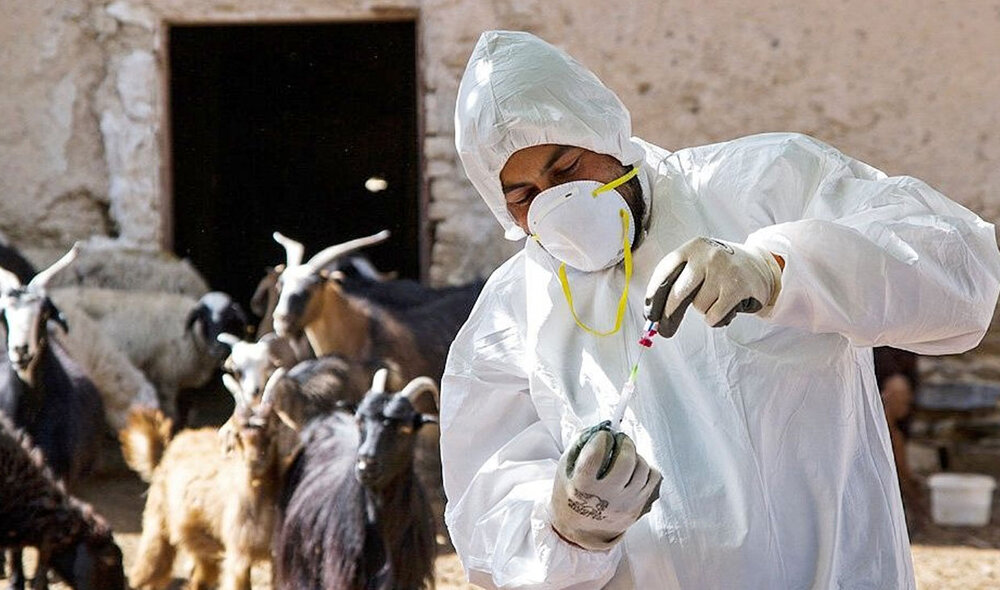
Brucellosis is a bacterial disease of mammals that can affect goats causing abortions in does and inflammation of testicles in bucks. While Brucellosis in goats is usually caused by Brucella melitensis, they can also be infected with Brucella abortus which is the brucella of cattle. Historically, the number of Brucella melitensis abortions has been extremely low in North America, but more recently, sporadic outbreaks have been reported in goats in Texas and Colorado. Brucella abortus is rare in the US. If Brucella enters a herd there is usually an abortion storm. Brucellosis is an important zoonotic disease known as Malta fever, Bang’s disease, or undulant fever in humans. Flu-like symptoms and high fever are the signs in humans.
WADDL offers Brucellosis testing by the detection of antibodies to Brucella abortus, Brucella suis and Brucella melitensis, causative agents of brucellosis, by card agglutination test method.
Like Q fever, Brucellosis is a disease that can infect people and cause serious illness. For more information, check out this link to the CDC Brucellosis Info Page.
G6S
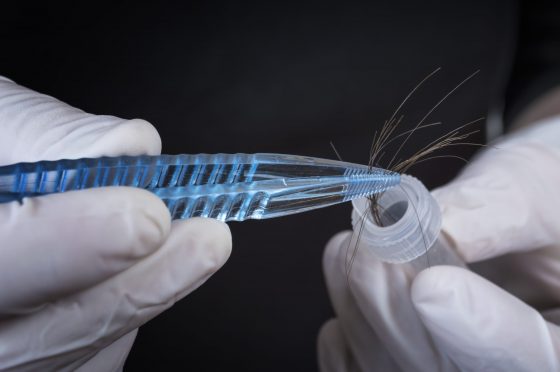
Caprine Mucopolysaccharideosis-IIID is a lysosomal storage disorder, caused by a genetic mutation (a point mutation) that results in a defective G6S (N-Acetylglucosamine-6-sulfatase) enzyme. The only method for testing for this genetic defect is with a DNA test identifying the causative point mutation.
Goats should be tested prior to breeding to minimize the risk of future kids born with this heritable defect. G6S-deficient goats may present with neurological deficiencies, which negatively affect growth and development and can often lead to early death. G6S is a genetic defect. As such, a goat may be tested at any stage of life, from birth to old age.
A Normal result means that the goat does not possess the causative genetic mutation on either of the two alleles (i.e. possesses two copies of the normal G6S gene), and therefore does not have the G6S deficiency. Breeding of these individuals’ results in genotypically (genetically) and phenotypically (physical appearance) normal offspring.
A Carrier result means that the goat carries one copy of the causative mutation, which was inherited from one of the two parents (i.e., the mutation is present on one of the two inherited alleles). Therefore, a carrier will possess one normal allele and one mutated allele (i.e., one copy of the normal gene and one copy of the defective gene). Carrier animals will appear normal since the disorder only manifests under a recessive mode of inheritance (i.e., two mutated or defective alleles for the genetic defect to manifest clinical disease). Carriers can pass one mutant (defective) allele on to their offspring. For example, if one parent possesses one copy of the recessive (defective) allele (a), there is a 50% chance of passing it to their offspring. Thus, genotypically, 50% of the offspring are expected to possess the recessive (mutant) allele; however, phenotypically, 100% will appear normal and be unaffected.
An additional example: two phenotypically normal goats can both be genotypically carriers (Aa), and thus if they are mated, then the following can occur:
In this case, there is a 75% chance of being phenotypically normal (AA, Aa x 2) and a 25% chance of being genotypically normal (i.e. AA, non-carrier). Moreover, there is a 25% chance that the offspring of two carriers will inherit the genotype most commonly associated with the G6S deficiency (i.e. aa, affected).
It is important to note that this probability is reset for each mating/breeding instance. Each offspring has the same probability.
An Affected diagnostic result should be interpreted to mean that the individual possesses two mutant alleles (aa) (i.e., the animal has two copies of the defective gene). Therefore, the goat has the genotype associated with the G6S deficiency.
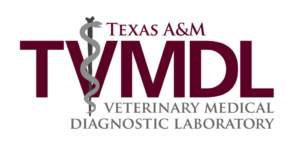
Currently, two veterinary labs, TVMDL and UC Davis, are conducting G6S testing. MDGA and ADGA have discounted prices for members with UC Davis when you order your tests through the association. For more info on the MDGA program, visit the MDGA Genetic Testing Page. Once you request your test, you will receive instructions on submitting the hair samples to UC Davis. It is very easy to get the hair samples. The current cost through MDGA is $27.
Once your results are reported, they will be logged with MDGA, and from then on, G6S status will appear on registration certificates. If you have already completed G6S testing on your goats, you can submit their results to MDGA to have them on record for future progeny.
Blood Sample Collection
Here’s what you need:
- 3cc Syringe with Needle
- Red Top Tube
- Permanent Marker to label tubes
- Clippers
- Alcohol or Alcohol Wipes
- Helper/Restrainer
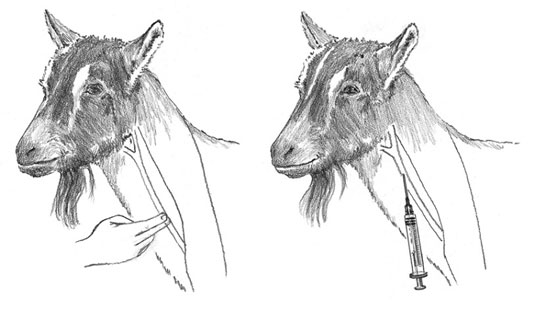
First off, drawing blood on goats is not hard! We usually pull blood on the Rafter O herd in January. This means kids from the previous spring are old enough to be tested, and we are 30 days past the last breeding, so we can test for pregnancy.
Some tips on drawing blood
- Watch some videos on YouTube. You’ll know how to restrain the goats, where to shave, etc. I always tend to start trying to find the vein too low. I then correct myself and move up the neck to the proper position. Here’s a link to a decent video.
- You need a helper to restrain the goat. If you back them up to a fence or wall, things will go smoother.
- Shave the neck in the general area of the vein. Since we pull blood in January, our goats are usually very FUZZY. Shaving helps to see what you are doing, and you can easily clean the skin with alcohol before the draw.
- Label your tubes before you start. The lab will want you to number your samples, and fill in the information on the submission form. If you don’t have a lot of goats, you can go ahead and put the number and name on each tube with a permanent marker/pen. If you have a good amount, it might be easier to just number your tubes and then keep a notepad and write down the name of the goat next to the number tube their blood sample went in. My friend, Lynette, taught me this trick, and it’s a time saver! Don’t have to fumble through all the tubes to find the right one!
- Use 3cc syringes! The other collection kits with double-sided needles, needle holders, vacutainers, etc. are not worth it. So much easier to just use a syringe and plain red-top tube.
- Supplies can be bought at Jeffers, Valley Vet, or other retailers.
- Sometimes, food can be a good distraction! Some goats do best with their heads in a feed bucket, and my helper just lifts up their chin, and away I go. They never even know what happened!
- Do some stretching and limber up before blood draw day! I can guarantee if you are over 40, you’ll be stoved up the next day!
I hope you’ve enjoyed this blog post on Diseases and Testing! Healthy animals is one of our top priorities at the Rafter O and we take it seriously! We want our goats to live long, happy, healthy lives, and we want your Rafter O goats to do so as well! Happy goating!


